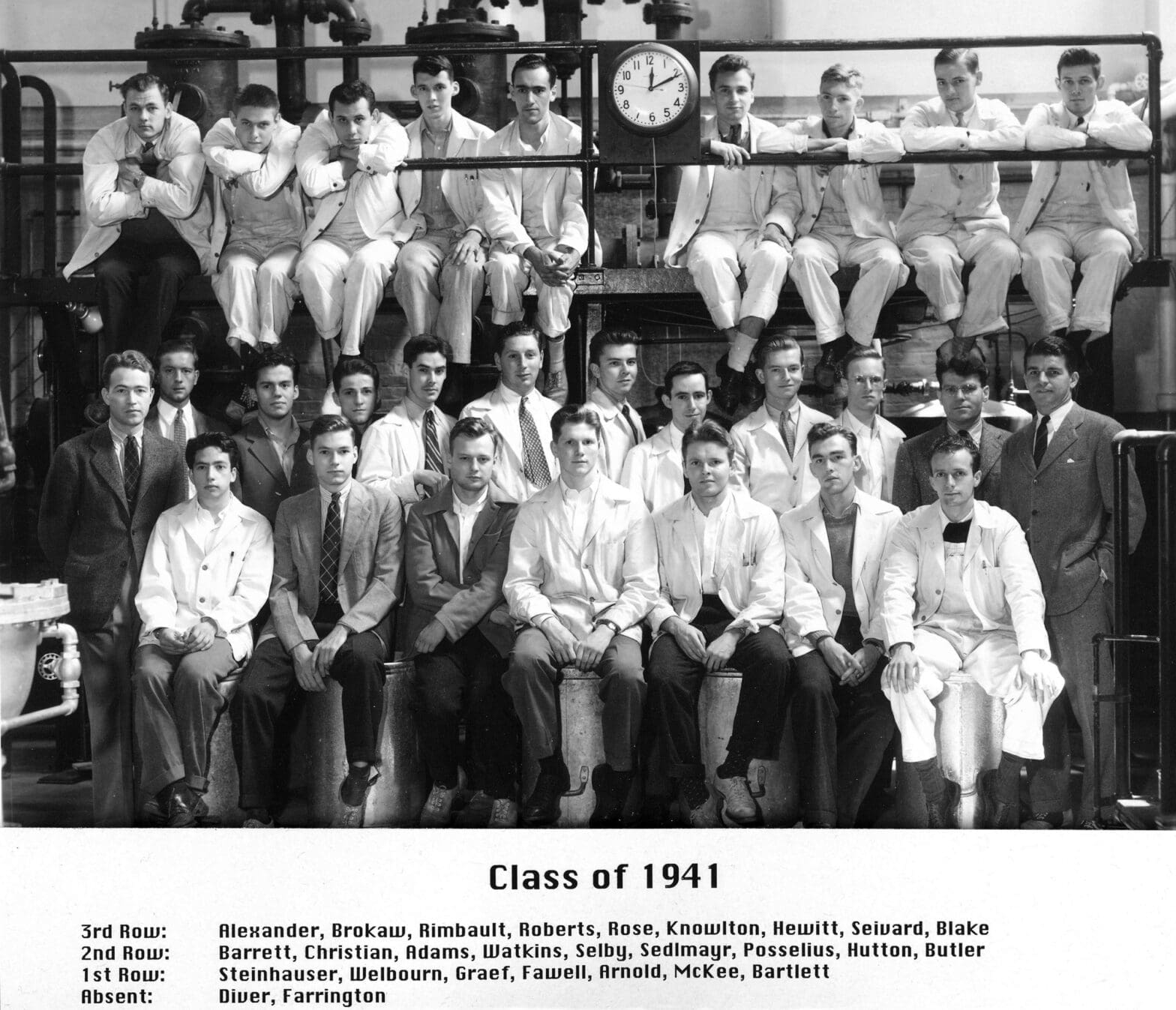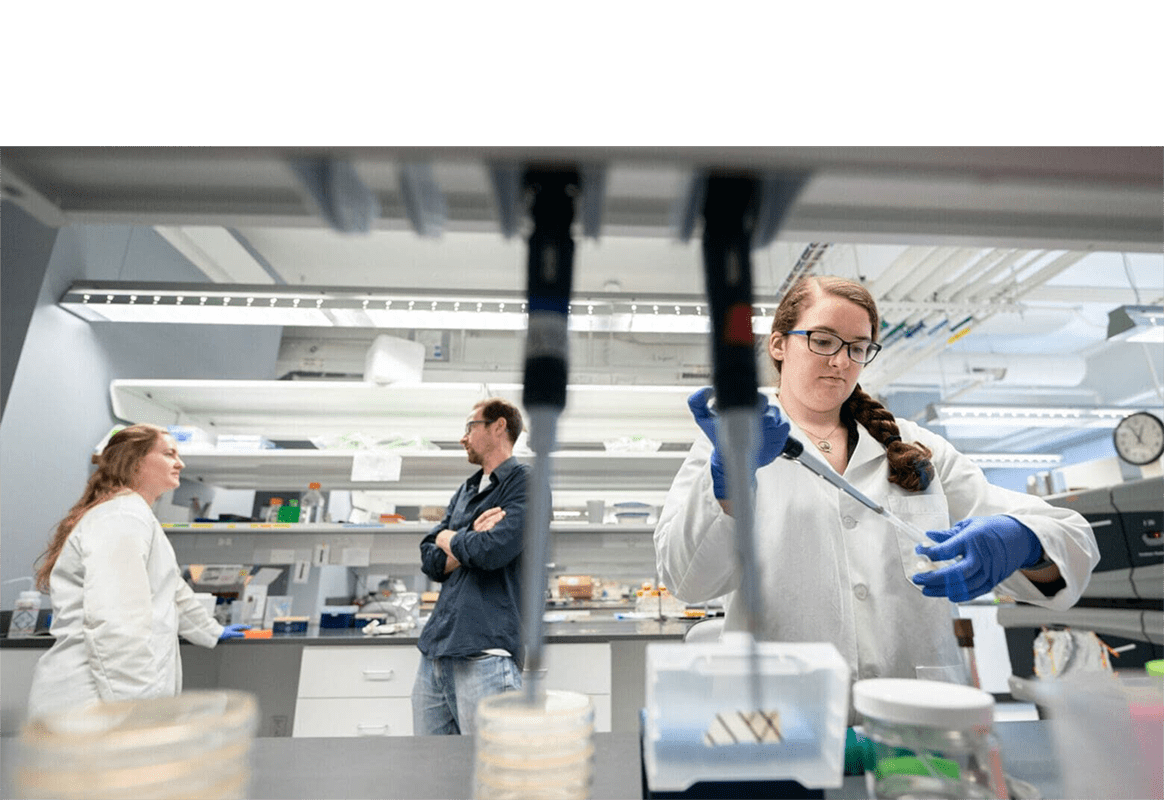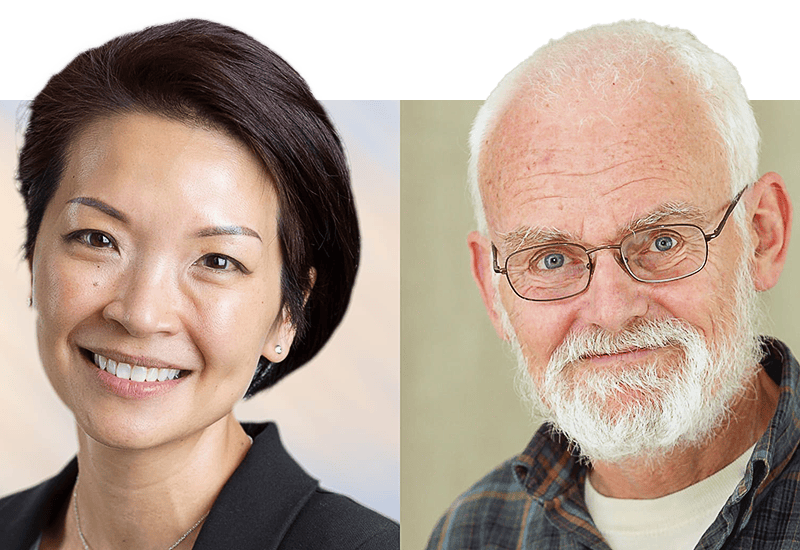
Part Ten: Princeton Chemical Engineering
By
on
This is from the series E100: Princeton Engineering’s 100th anniversary
#57
Which chemistry chair established the Department of Chemical Engineering?
Chemical engineering was one of the original disciplines created at the Princeton School of Engineering in 1921, with the first courses offered the following year under the direction of a chemistry professor who had come over from England in 1914. He would go on to become chair of the chemistry department, and seeing the need for a freestanding Department of Chemical Engineering, would help formally separate it from the Department of Chemistry in 1934. Later in his career he would become dean of the Graduate School, and would play a key role in the Manhattan Project, which created the atomic bomb. Who was this professor?
Although he was best known as a professor and longtime department chair with the Department of Chemistry, Sir Hugh Stott Taylor played a pivotal role in establishing the department we now know as Chemical and Biological Engineering. He directed the first courses in chemical engineering in 1922, and in 1930 helped create the Department of Chemical Engineering, which formally separated from Chemistry in 1934, and awarded its first doctorate in 1948 (see fact #11). Stott was born in Lancashire, England in 1890, being educated at the University of Liverpool, and arriving at Princeton in 1914, expecting to only stay a few years. He would spend 25 years as chairman of the chemistry department, and became dean of the Graduate School in 1945, until he retired in 1958. He was instrumental in creating the first Frick Chemical Laboratory in 1929. A co-author of a significant book on catalysis, he contributed to development of the atomic bomb by discovering an effective catalyst to produce heavy water. He was knighted by Queen Elizabeth II in 1953, and died in 1974. The department has grown to 21 faculty members, including three members of the National Academy of Engineering, a member of the National Academy of Science, a MacArthur Fellow, and more.
#58
“I really do feel that women in chemical engineering are very lucky.” – Maria Burka *78
It’s tough being a trailblazer, and Maria Burka did it several times, first as one of the very first women grad students in Princeton’s Department of Chemical Engineering, then as a faculty member at the same department at the University of Maryland. She spoke in various oral history projects about her struggles in the workforce after graduating from MIT, being urged by fellow women not to put her first name down on job applications, and after finally finding work in the private sector, being passed over for a promotion because of a perception she didn’t fit into the male culture. So she went back to school — Princeton Engineering — to pursue her doctorate. “There’s always a challenge when you’re the first woman,” she said in a 2012 podcast for the Chemical Heritage Foundation. “The transition is never easy. It took a while, but you learn, and with patience, times change, things get better.” She went on to spend more than 30 years at the National Science Foundation as a program director. She also served as president of AIChE, the chemical engineering professional organization. In the podcast, she said women in the field of chemical engineering have great camaraderie. “I think of all the engineering fields, chemical engineering is most welcoming to women. Because it’s a relatively smaller group, we are very good about mentoring each other, providing each other with the kind of help and support you need in your profession.” Burka recalls Carol Hall, at the time an assistant professor, as a great mentor. Burka retired in 2016, and has continued volunteer activities in the area of chemical engineering, including serving on several boards, as well as being an active grandparent. “I am forever grateful for the excellent education and training I got at Princeton. I was on the Chemical and Biological Engineering Department advisory committee at one point and was very impressed with how the department was growing, changing and developing in new and innovative directions.” In a commencement address to the Class of 2020 at MIT, she was invited to give a (virtual) commencement address to the Class of 2020 at MIT, where she urged students to be flexible. “A career, you never know where it’s going to lead,” she said. “Be willing to try new things, even if they’re not exactly what you think is perfect for you… Don’t get discouraged, ‘cause the best is yet to come.” In the last three years, women have made up the distinct majority of CBE concentrators at Princeton — quite a change from those early days.
#59
What is the difference between chemistry and chemical engineering?
At Princeton, chemical engineering was born within the chemistry department. A freestanding chemical engineering program was established in 1930, as we noted in fact #57. What is the distinction (and similarities) between these two disciplines?
In two words, it’s product development. Although it was born at Princeton within the field of chemistry, chemical engineering also uses mathematics, biology and physics to develop processes that create products. It’s the conversion of raw materials and chemicals into useful applications. They make products across the spectrum, such as microchips, polymers, petrochemicals, drugs and biomedical devices, and more. James Wei, an emeritus chemical engineering professor who arrived at Princeton as engineering dean in 1991, said one major difference is the ability to scale up. Many early chemists, he said, were essentially working as chemical engineers. He noted that Fritz Haber and Carl Bosch, winners of the Nobel Prize in Chemistry, synthesized ammonia, which was used to make fertilizer to help farmers worldwide. William Schowalter, an emeritus professor who specializes in fluid mechanics, said products could be based on chemistry, but large-scale manufacturing required processes not found in traditional chemistry texts. “Those approaches became the foundation of chemical engineering.” Over the years, the department evolved, as the increasing role of biotechnology in chemical engineering led to it being renamed the Department of Chemical and Biological Engineering in 2010. Today, about half of undergrads choose the “bioengineering and biotechnology” area of concentration of the undergraduate curriculum, and around 40 percent of grad students do theses related to biological engineering.
#60
“I never felt there was something I cannot do and accomplish if I set my mind to doing it.” – Jackie Ying *91
Jackie Ying, a 1991 Princeton graduate in chemical engineering, has been widely recognized for her contributions to scientific research with important medical applications. Her research was used as the basis for products like a glucose-responsive delivery insulin system; point-of-care test kits that use a minimal amount of blood or saliva to quickly and accurately diagnose infectious diseases; and most recently, a quick test to determine a person has COVID-19, reducing the wait time from six hours to about five minutes. She currently serves as executive director of the Institute of Bioengineering and Nanotechnology in Singapore. Ying was named of one of the “100 Chemical Engineers of the Modern Era” by the American Institute of Chemical Engineers in 2008 during its centennial celebration, and she was recently the first scientist to be named to the U.S. National Academy of Engineering based on work done in Singapore. “It was very important for me that my parents never set me in any certain pigeonholes, and say you be like this. They are very accepting of who I am. And they never told me, you can’t do that because you’re a girl, you’re a woman. There were no such limitations that were drawn for me. Of course, society is a different story. We have a lot of constraints, but I think probably because my parents never set those limitations for me, I never felt there was something I cannot do and accomplish if I set my mind to doing it.”
#61
What time is on the clock when CBE grad students pose for their class picture?
Starting in the mid-1940s, chemical engineering students gathered annually in a laboratory in Aaron Burr Hall to pose for their annual class photo, posing under an analog clock. When the department moved to the Engineering Quadrangle upon its opening in the 1960s, they started taking the photos outside the new building. But the clock had become such an important part of the tradition, that students carried one outside and held it up by hand, a ritual that continues to this day. That clock is generally set to a specific time of day. What time is that? Bonus points if you know why they choose that time for the clock.
Chemical and biological engineering students have traditionally posed with a clock in their annual class photos, first inside a lab at Aaron Burr Hall, then outside the EQuad when that building opened. Separate photos were taken of graduate students and undergrads; in the early days, the grad students gathered at the start of the day, which was 7:30; the undergrads typically gathered at lunchtime, or 12:10 p.m. Jay Benziger, an emeritus professor, appeared in 35 years of the photos from 1981 to 2016 (he missed a few and retired in 2020). Benziger said that after moving to the EQuad, “the students decided the clock was an historical remnant that they wished to keep and so the students would take a clock and set it for 7:30 and hold it up during the photo shoot. The significance of 7:30 was to show how hard the students worked by having them show up in the lab at 7:30.” That was likely the actual time in the original photographs, “but it was probably staged by the 1960’s,” Benziger said. Today, most of the undergraduate class photos also have the clock set to 7:30, even though that was not their original time. If you want to peruse the photos, they can be seen at the CBE website under “Class Photos,” or in the CBE hallway in the EQuad on a computer screen there. It’s a fascinating look back through the department’s history.






